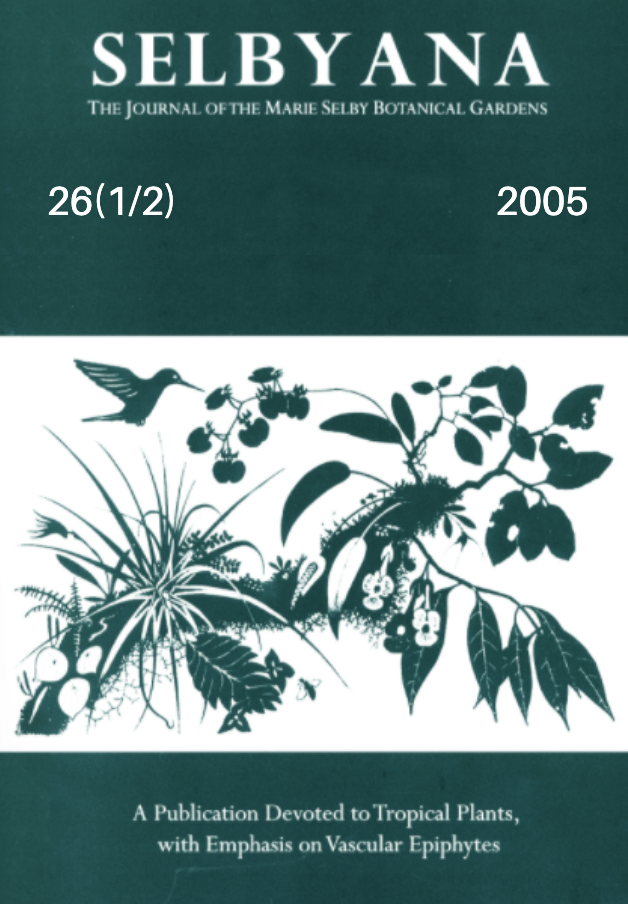Abstract
Some conservation strategies set aside large areas for nature reserves. Native plants, including orchids, are collected from these reserves for scientific study by public and private foundations, and seeds are collected and stored. This last strategy, seed banking, appears to be the simplest to execute and the most economical. Problems arise, however, regarding the most efficient methods for storing orchid seed. Such problems involve temperature, seed moisture, and seed survivability in each type of storage. One advantage is that several pods of half sibling plants may be stored and variability preserved in a very small package. On the other hand, orchid seeds, especially seeds of tropical orchids, appear to have short-lived seeds and thus do not survive to long-term storage.
Open Access and Copyright Notice
Selbyana is committed to real and immediate open access for academic work. All of Selbyana's articles and reviews are free to access immediately upon publication. There are no author charges (APCs) prior to publication, and no charges for readers to download articles and reviews for their own scholarly use. To facilitate this, Selbyana depends on the financial backing of the Marie Selby Botanical Gardens, the hard work and dedication of its editorial team and advisory board, and the continuing support of its network of peer reviewers and partner institutions.
Authors are free to choose which open license they would like to use for their work. Our default license is the Creative Commons Attribution-NonCommercial 4.0 (CC BY-NC 4.0). While Selbyana’s articles can be copied by anyone for noncommercial purposes if proper credit is given, all materials are published under an open-access license with authors retaining full and permanent ownership of their work. The author grants Selbyana a perpetual, non-exclusive right to publish the work and to include it in other aggregations and indexes to achieve broader impact and visibility.
Authors are responsible for and required to ascertain that they are in possession of image rights for any and all photographs, illustrations, and figures included in their work or to obtain publication or reproduction rights from the rights holders. Contents of the journal will be registered with the Directory of Open Access Journals and similar repositories. Authors are encouraged to store their work elsewhere, for instance in institutional repositories or personal websites, including commercial sites such as academia.edu, to increase circulation (see The Effects of Open Access).
